Photos of 7 planets may exist in the Trappist-1 star system
NASA has just announced to space science lovers that astronomical images are considered the most impressive of discovering 7 planets of the same size and mass as the Earth in a single star system - Why is Trappist-1 located 39 light years away most likely an environment for life to survive ? Let's admire the photos of 7 planets that can survive the life of the star system Trappist-1 below!
Trappist-1- a star system has 7 planets
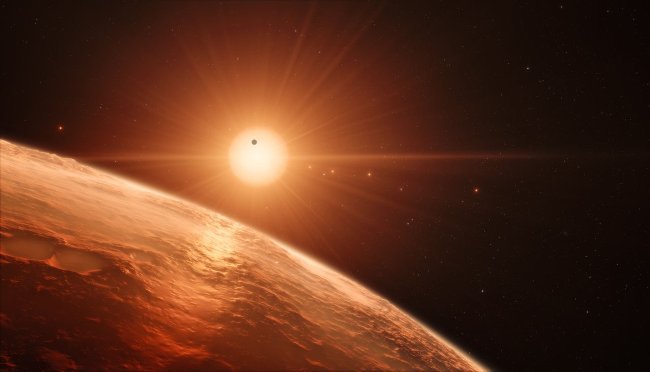 Photo source: ESO / M. Kornmesser / spaceengine.org
Photo source: ESO / M. Kornmesser / spaceengine.org
On February 22, 2017, scientists announced the discovery of the Trappist-1 star system, an alien solar system with at least 7 planets of nearly the same size and weight as the Left. The soil, probably the environment that allows life to exist. All 7 planets revolve around the cool Trappist-1 dwarf in a position where water ( if any ) on these planets will not be too cold to freeze, or not too hot to be impossible. life maintenance. The finding has inspired NASA scientists to be extremely excited: " We have found another system that could exist in this vast universe ." The tiny Trappist-1 star is only about 39 light-years away from our Earth.
Trappist-1 star system
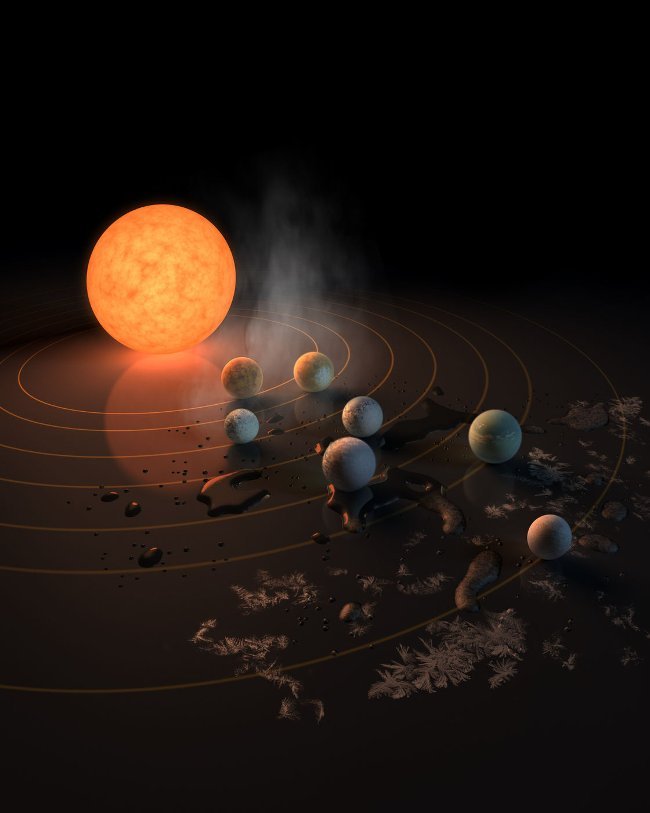 Photo source: NASA / JPL-Caltech
Photo source: NASA / JPL-Caltech
" Seven planets in the star system Trappist-1 have about 75 to 110% of the Earth's mass . At least now there are 3 planets with surface temperatures that allow water to exist in liquid form ," scientists said.
Trappist-1 trajectory diagram
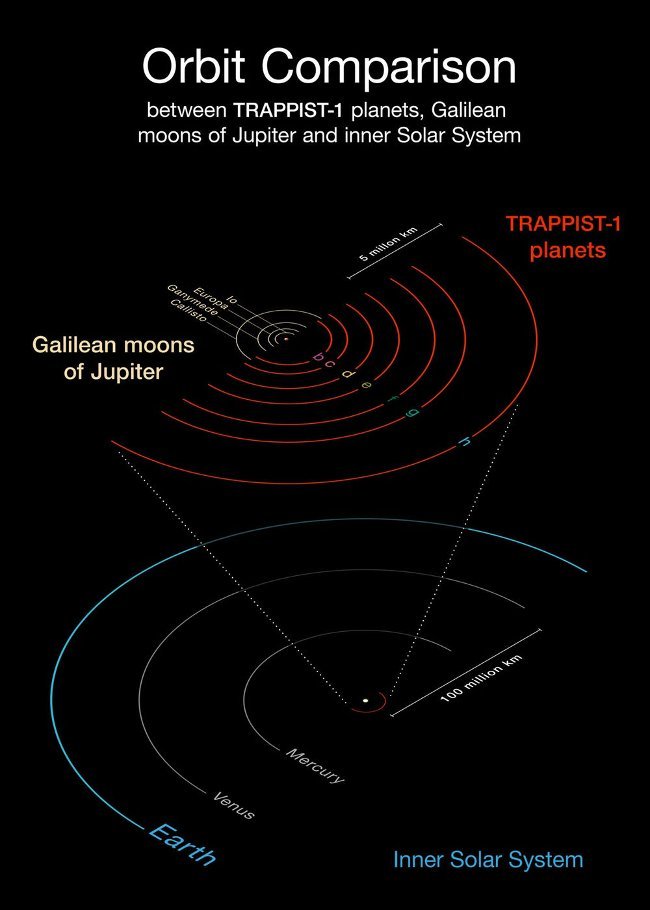 Photo source: ESO / O. Furtak
Photo source: ESO / O. Furtak
The orbital map of the planets in the Trappist-1 star system, compared to Galilean moon , Mercury, Venus and Earth.
The surface of a planet in the Trappist-1 star system
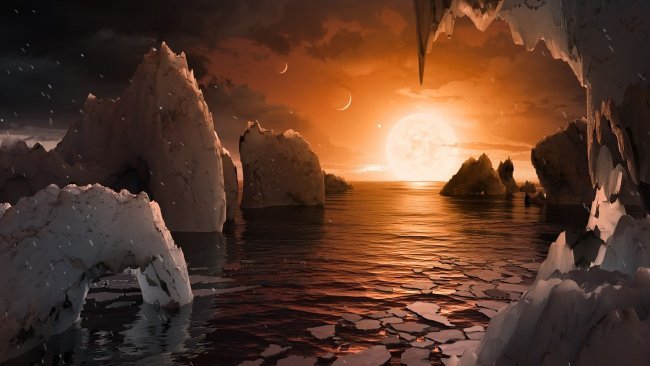 Photo source: NASA / JPL-Caltech
Photo source: NASA / JPL-Caltech
An artistic photograph of the surface scene of one of the seven Earth-sized planets in the Trappist-1 star system.
Planets in the star system Trappist-1 and the solar system
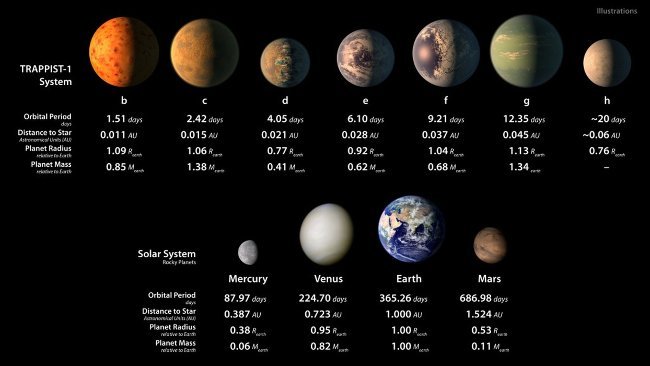 Photo source: NASA / JPL-Caltech
Photo source: NASA / JPL-Caltech
The image shows detailed statistics about the characteristics of each planet in the Trappist-1 star system and in the solar system.
3 Trappist-1 planets were discovered in 2016
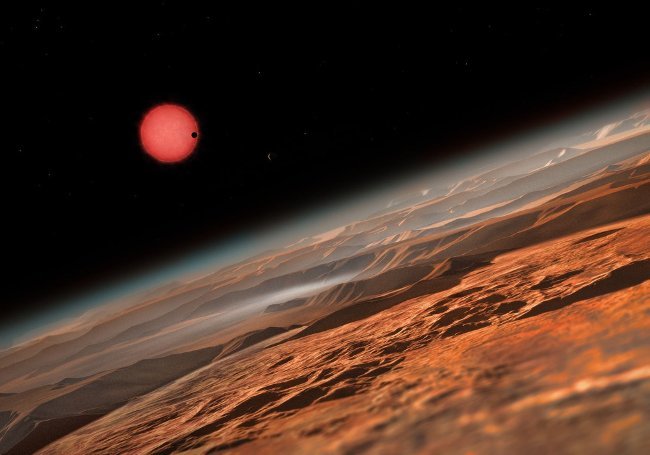 Photo source: ESO
Photo source: ESO
In 2016, astronomers announced the discovery of three planets the size of Earth in the Trappist-1 star system. Finally, so far the number of planets observed in this star system has increased to 7.
Trappist-1 planetary surface
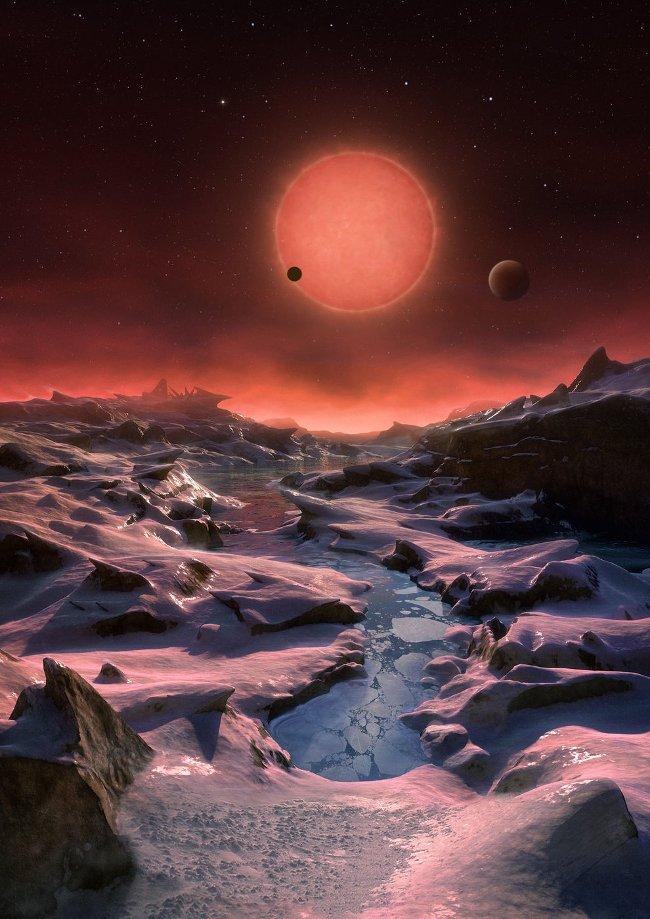 Photo source: ESO
Photo source: ESO
Another impressive artistic image was taken on the surface of the Trappist-1 star system.
Trappist-1 planetary system
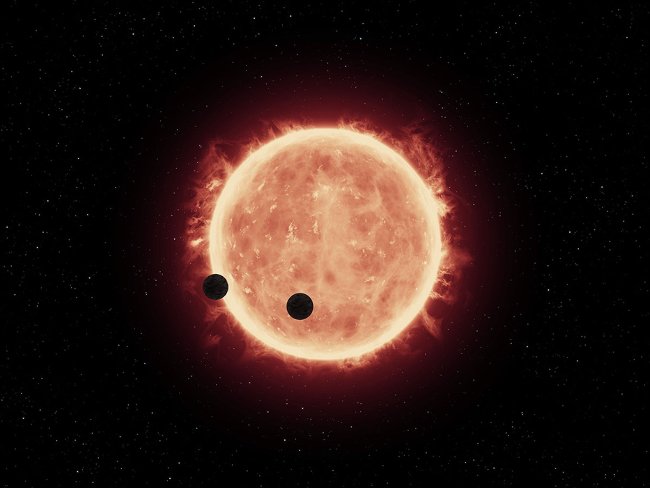 Photo source: NASA, ESA, G. Bacon (STScI) and J. de Wit (MIT)
Photo source: NASA, ESA, G. Bacon (STScI) and J. de Wit (MIT)
The impressive image of two extraterrestrial planets roughly the size of Earth traverses the faint star Trappist-1 surface, located 39 light-years from Earth.
Compare the dimensions of planets in the Trappist-1 star system
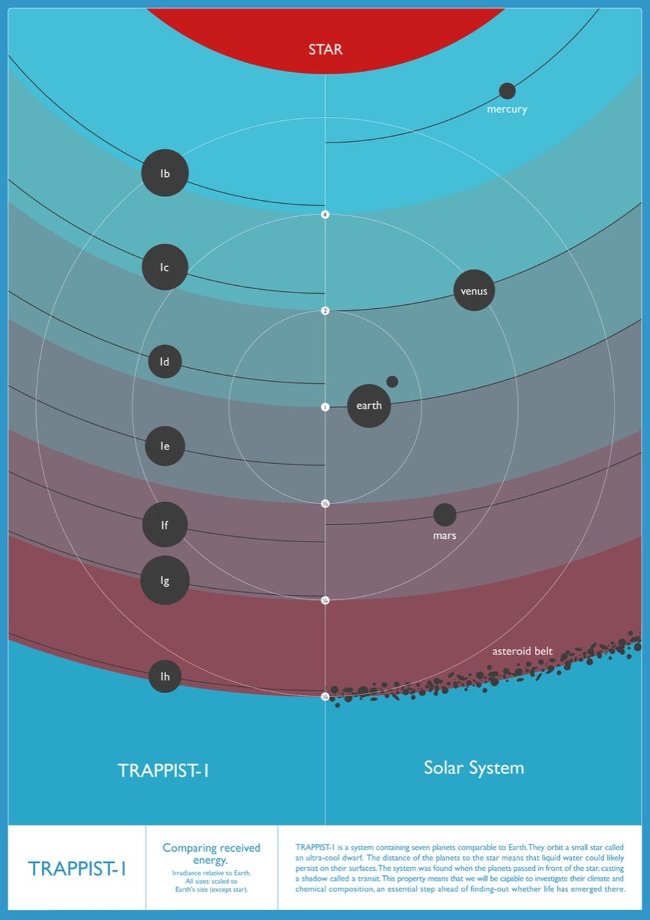 Photo source: Amanda Smith / IOA
Photo source: Amanda Smith / IOA
The diagram above shows the size of the Trappist-1 star and planets, compared to the bodies in the solar system. The Trappist-1 star is only slightly larger than Jupiter.
The energy flow in Trappist-1
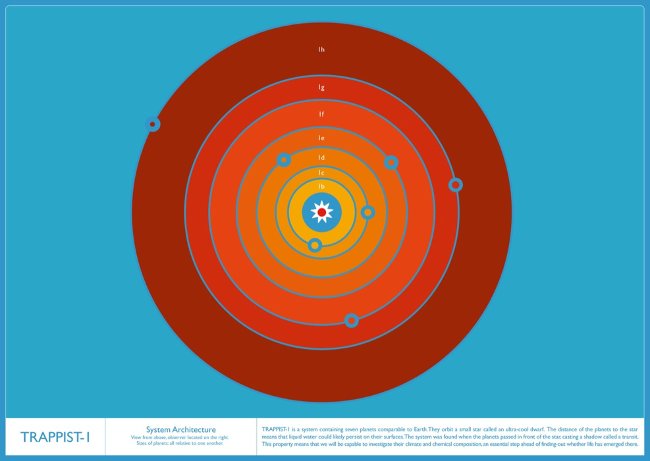 Photo source: Amanda Smith / IOA
Photo source: Amanda Smith / IOA
The diagram tells us how much energy the planets in the Trappist-1 system receive, compared to the planets in the solar system.
Trappist-1 star structure
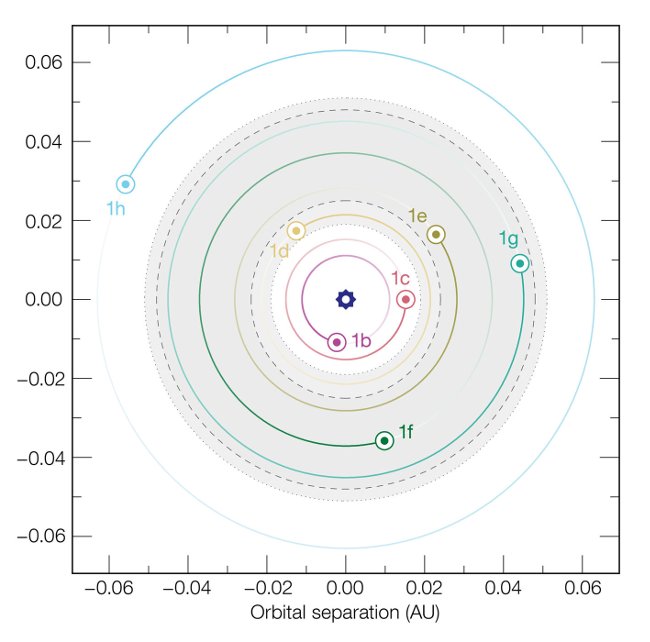 Photo source: Amanda Smith / IOA
Photo source: Amanda Smith / IOA
The trajectory of 7 planets in the star system Trappist-1. The dimensions of the 7 planets are quite accurate, but because they are on a different range and a different distance from the star.
The trajectory of 7 planets in the star system Trappist-1
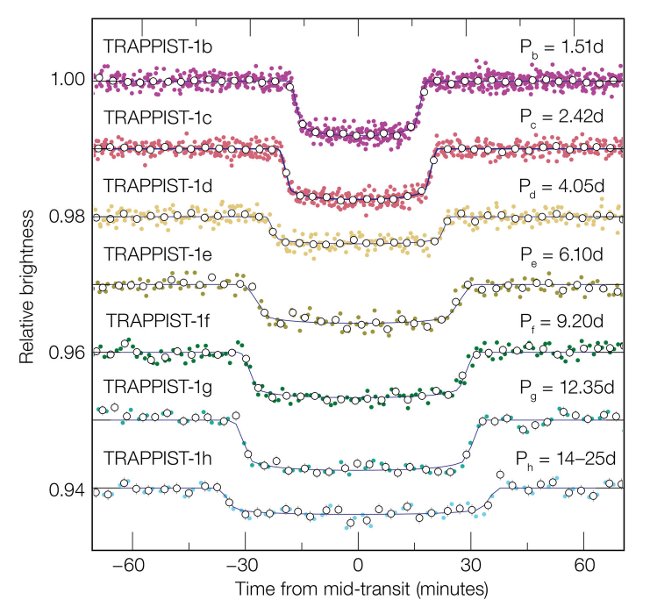 Photo source: ESO / M. Gillon et al.
Photo source: ESO / M. Gillon et al.
This graph shows that the red dwarf Trappist-1 will appear a little dimmed each time he moves in front of one of the seven planets ( observed from Earth ). Moreover, we can clearly see the trajectory of 7 planets orbiting a cold red dwarf Trappist-1. Shaded areas represent the " living area " of the star, where a planet has the right temperature to survive water in liquid form. The dots show alternate boundaries for the area where life can exist based on the " assumption hypothesis ", according to a statement from the European Southern Observatory . said.
The movement of the planet Trappist-1c, Trappist-1e and Trappist-1f
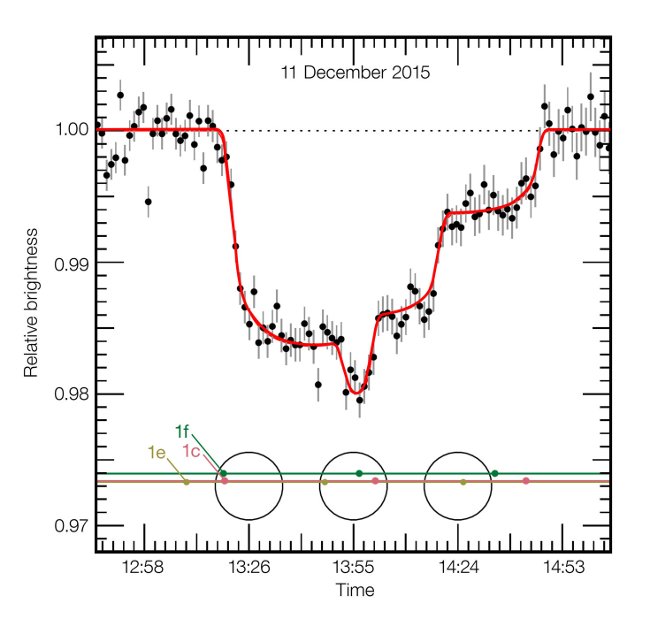 Photo source: ESO / M. Gillon et al.
Photo source: ESO / M. Gillon et al.
Images of star Trappist-1 during the teleportation of 3 planets. Planetary movement occurs when a planet passes between the host star and Earth, causing a clear change in the brightness of the star. In this case, the three planets are moving around the star.
Brightness in the star system Trappist-1
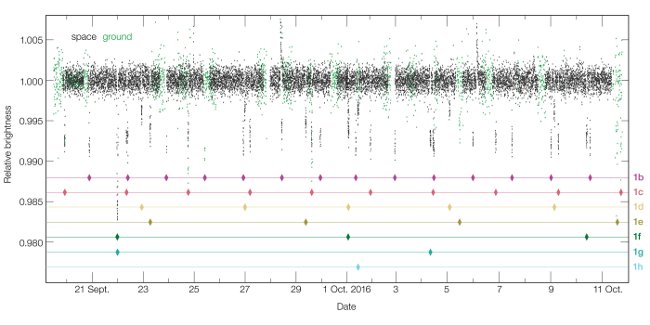 Photo source: ESO / M. Gillon et al.
Photo source: ESO / M. Gillon et al.
This chart shows the brightness of the cool red dwarf Trappist-1 changes over 20 days ( September 21 to October 11, 2016 ). The degree of luminance of brightness is also affected by one or more planets rotating in front of the star and blocking its light for a short period of time.
Star Trappist-1 and Sun.
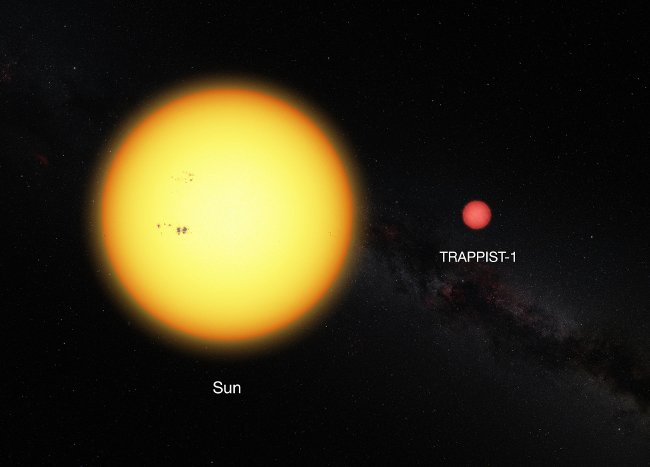 Photo source: ESO
Photo source: ESO
This image shows the size of the Sun compared to the cold red dwarf Trappist-1. Planets orbiting a shorter star, that Mercury orbit around the Sun, which is not too cold to maintain liquid water - can survive.
Compare the star system Trappist-1 and the solar system
 Photo source: ESO / O. Furtak
Photo source: ESO / O. Furtak
This image compares the planets in the Trappist-1 star system with the planets in the solar system. The size of the Sun on Earth is based on Trappist-1 red dwarfs. The positions of the 7 planets orbiting the Trappist-1 star are shown to be related to Mercury's orbit around the Sun.
Compare the dimensions of 7 planets in the Trappist-1 star system
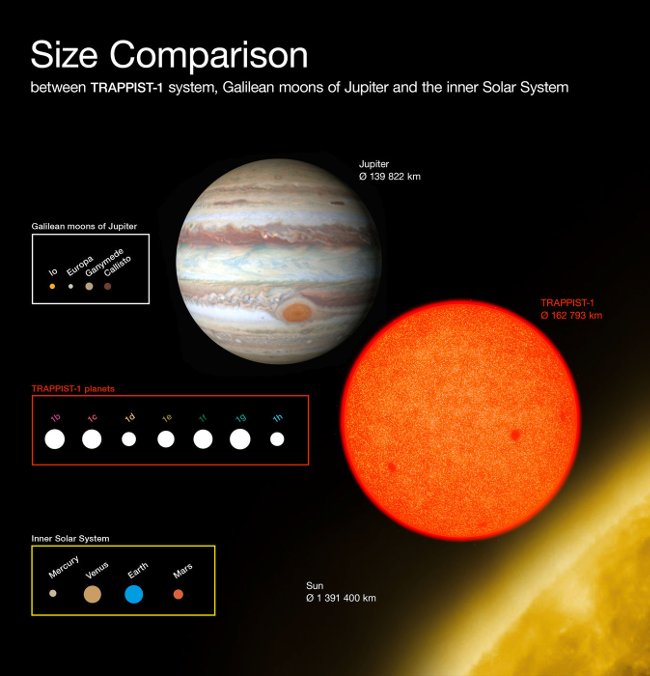 Photo source: ESO / O. Furtak
Photo source: ESO / O. Furtak
Compare the size of the Trappist-1 star system with the Sun and planets in the solar system, as well as Jupiter and its largest satellite.
Trappist-1 and Galilean Moons (satellites of Jupiter)
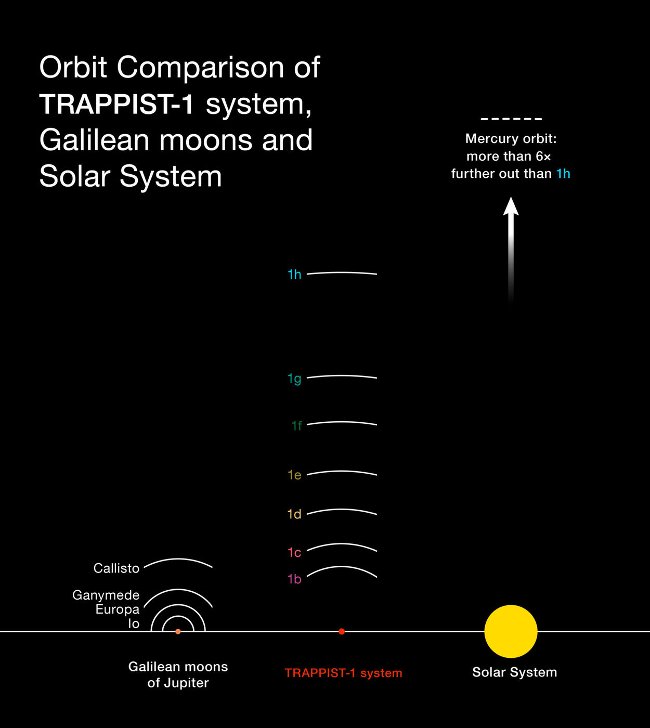 Photo source: ESO / O. Furtak
Photo source: ESO / O. Furtak
This image compares planets in the star system Trappist-1 with the orbit of some of Jupiter's largest satellites.
Photo of Trappist-1 remotely
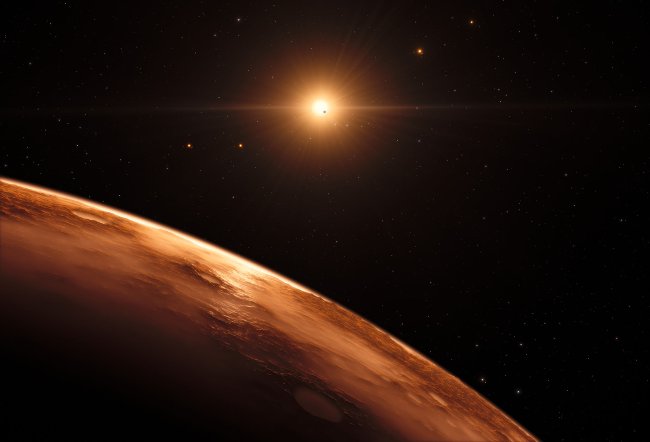 Photo source: ESO / M. Kornmesser / spaceengine.org
Photo source: ESO / M. Kornmesser / spaceengine.org
The art of capturing what we can observe when standing in one of the planets has a longer distance than the cold dwarf Trappist-1.
The surface of the planet Trappist-1
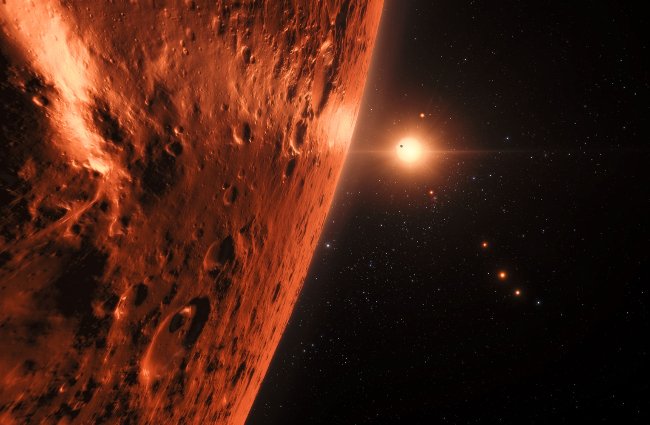 Photo source: ESO / M. Kornmesser / spaceengine.org
Photo source: ESO / M. Kornmesser / spaceengine.org
Images can be observed on the surface of a planet in the Trappist-1 star system.
Refer to some more articles:
- NASA announced concussion: 7 Earth-sized planets could have life
- How long does it take to get up to 7 life-capable planets - has Trappist-1 been discovered?
- SpaceX reversed the plan to launch missiles on Mars by 2020
Having fun!
You should read it
- 5 interesting facts about TRAPPIST-1, solar system version 2.0
- How long does it take to get up to 7 life-capable planets - has Trappist-1 been discovered?
- Discovered evidence that 'Solar System 2.0' has water
- Maybe the Solar System 2.0 is not the 'cradle of nurturing life' as NASA hopes
- If people 'occupy' the Sun 2.0 system, how different is life there from Earth?
- Cosmic Science: The star system TRAPPIST-1 does not 'exist' the big Moon
- Top 5 planets may be our 'new houses' in the future
- If 'stray' to any planet in the solar system, what is your chance of survival?
May be interested
- NASA declares the existence of the 9th planet in our Solar System
 the 9th planet may exist in our solar system. this is nasa's recent statement with the press about the new and mysterious planet in our solar system.
the 9th planet may exist in our solar system. this is nasa's recent statement with the press about the new and mysterious planet in our solar system. - 5 interesting facts about TRAPPIST-1, solar system version 2.0
 tranppist-1 has more red color and much lower temperature than the sun. its size is only slightly larger than jupiter and about 40 light-years from our earth.
tranppist-1 has more red color and much lower temperature than the sun. its size is only slightly larger than jupiter and about 40 light-years from our earth. - How many planets are there in the universe?
 according to estimates by astronomers based on the assumption that each star has a planet orbiting, the universe has about 100,000 billion billion planets.
according to estimates by astronomers based on the assumption that each star has a planet orbiting, the universe has about 100,000 billion billion planets. - What happens if the plane takes off on 8 planets in the solar system?
 what if the plane we were so familiar with in each trip took off on other planets in the solar system, what would happen?
what if the plane we were so familiar with in each trip took off on other planets in the solar system, what would happen? - NASA's space telescope finds three new planets with rare features
 all three planets revolve around a star called toi 270, located about 73 light-years from our earth.
all three planets revolve around a star called toi 270, located about 73 light-years from our earth. - 12 interesting records of planets in the universe
 in the universe there are countless strange and mysterious planets. with the help of modern technology, people have known many planets with special shapes, sizes, structures, completely different from the earth. here are 12 records set in the universe: the hottest, oldest, youngest, coldest planet ... that people have known.
in the universe there are countless strange and mysterious planets. with the help of modern technology, people have known many planets with special shapes, sizes, structures, completely different from the earth. here are 12 records set in the universe: the hottest, oldest, youngest, coldest planet ... that people have known. - If 'stray' to any planet in the solar system, what is your chance of survival?
 so far, our earth is still the only planet capable of sustaining life in the solar system. but suppose if humans could set foot on planets in the solar system, would we have a chance to survive?
so far, our earth is still the only planet capable of sustaining life in the solar system. but suppose if humans could set foot on planets in the solar system, would we have a chance to survive? - How long does one day on the solar system planets last?
 the length of the day in each planet depends on its distance to the sun, the orbital cycle (the time the planet orbits the sun) and the astronomical cycle (the time it spins around the axis).
the length of the day in each planet depends on its distance to the sun, the orbital cycle (the time the planet orbits the sun) and the astronomical cycle (the time it spins around the axis). - Interesting discovery of strange planets outside the solar system
 so far, humans have discovered more than 400 extrasolar planets (exoplanets) in the universe. here are interesting facts about the most beautiful exoplanets that humans have ever known.
so far, humans have discovered more than 400 extrasolar planets (exoplanets) in the universe. here are interesting facts about the most beautiful exoplanets that humans have ever known. - How to view planets in the Solar System with Google Maps in just a few clicks
 the new google maps adds moon, mars and many other planets to enable us to 'fly' and spoiled for exploring 12 planets in the solar system after just a few clicks.
the new google maps adds moon, mars and many other planets to enable us to 'fly' and spoiled for exploring 12 planets in the solar system after just a few clicks.










 What is the light year?
What is the light year? NASA revealed the first studies of the planet's outer atmosphere
NASA revealed the first studies of the planet's outer atmosphere If people 'occupy' the Sun 2.0 system, how different is life there from Earth?
If people 'occupy' the Sun 2.0 system, how different is life there from Earth? The UAE plans to build a city on Mars
The UAE plans to build a city on Mars 10 interesting facts about black holes in the universe (Part 1)
10 interesting facts about black holes in the universe (Part 1)